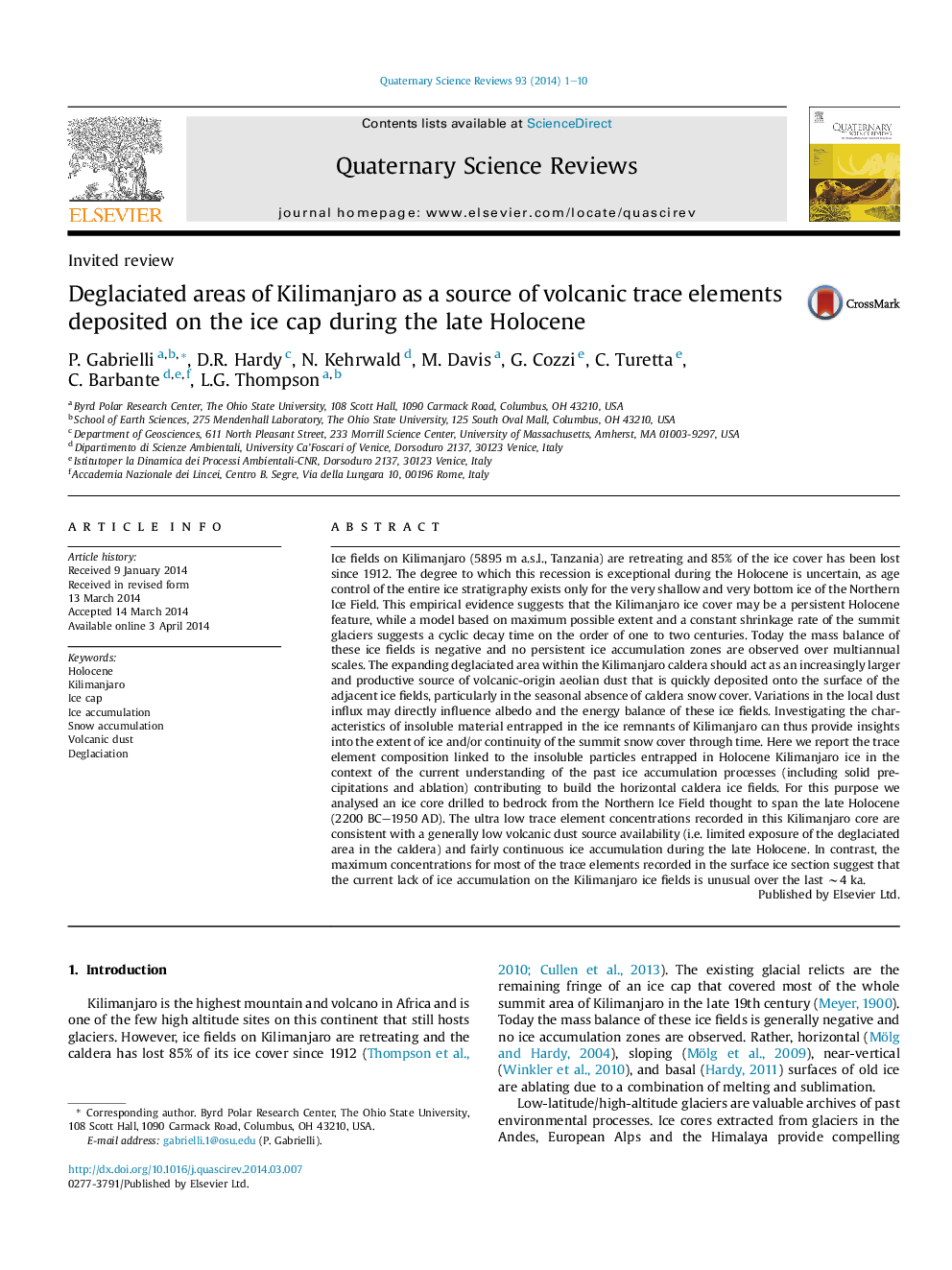| کد مقاله | کد نشریه | سال انتشار | مقاله انگلیسی | نسخه تمام متن |
|---|---|---|---|---|
| 6446247 | 1640841 | 2014 | 10 صفحه PDF | دانلود رایگان |
عنوان انگلیسی مقاله ISI
Deglaciated areas of Kilimanjaro as a source of volcanic trace elements deposited on the ice cap during the late Holocene
ترجمه فارسی عنوان
مناطق خشک شده از کیلمانجارو به عنوان منبع عناصر کمیاب آتشفشانی که بر روی کلاه یخ در اواخر هولوسن قرار دارند
دانلود مقاله + سفارش ترجمه
دانلود مقاله ISI انگلیسی
رایگان برای ایرانیان
کلمات کلیدی
موضوعات مرتبط
مهندسی و علوم پایه
علوم زمین و سیارات
زمین شناسی
چکیده انگلیسی
Ice fields on Kilimanjaro (5895Â m a.s.l., Tanzania) are retreating and 85% of the ice cover has been lost since 1912. The degree to which this recession is exceptional during the Holocene is uncertain, as age control of the entire ice stratigraphy exists only for the very shallow and very bottom ice of the Northern Ice Field. This empirical evidence suggests that the Kilimanjaro ice cover may be a persistent Holocene feature, while a model based on maximum possible extent and a constant shrinkage rate of the summit glaciers suggests a cyclic decay time on the order of one to two centuries. Today the mass balance of these ice fields is negative and no persistent ice accumulation zones are observed over multiannual scales. The expanding deglaciated area within the Kilimanjaro caldera should act as an increasingly larger and productive source of volcanic-origin aeolian dust that is quickly deposited onto the surface of the adjacent ice fields, particularly in the seasonal absence of caldera snow cover. Variations in the local dust influx may directly influence albedo and the energy balance of these ice fields. Investigating the characteristics of insoluble material entrapped in the ice remnants of Kilimanjaro can thus provide insights into the extent of ice and/or continuity of the summit snow cover through time. Here we report the trace element composition linked to the insoluble particles entrapped in Holocene Kilimanjaro ice in the context of the current understanding of the past ice accumulation processes (including solid precipitations and ablation) contributing to build the horizontal caldera ice fields. For this purpose we analysed an ice core drilled to bedrock from the Northern Ice Field thought to span the late Holocene (2200 BC-1950 AD). The ultra low trace element concentrations recorded in this Kilimanjaro core are consistent with a generally low volcanic dust source availability (i.e. limited exposure of the deglaciated area in the caldera) and fairly continuous ice accumulation during the late Holocene. In contrast, the maximum concentrations for most of the trace elements recorded in the surface ice section suggest that the current lack of ice accumulation on the Kilimanjaro ice fields is unusual over the last â¼4Â ka.
ناشر
Database: Elsevier - ScienceDirect (ساینس دایرکت)
Journal: Quaternary Science Reviews - Volume 93, 1 June 2014, Pages 1-10
Journal: Quaternary Science Reviews - Volume 93, 1 June 2014, Pages 1-10
نویسندگان
P. Gabrielli, D.R. Hardy, N. Kehrwald, M. Davis, G. Cozzi, C. Turetta, C. Barbante, L.G. Thompson,
